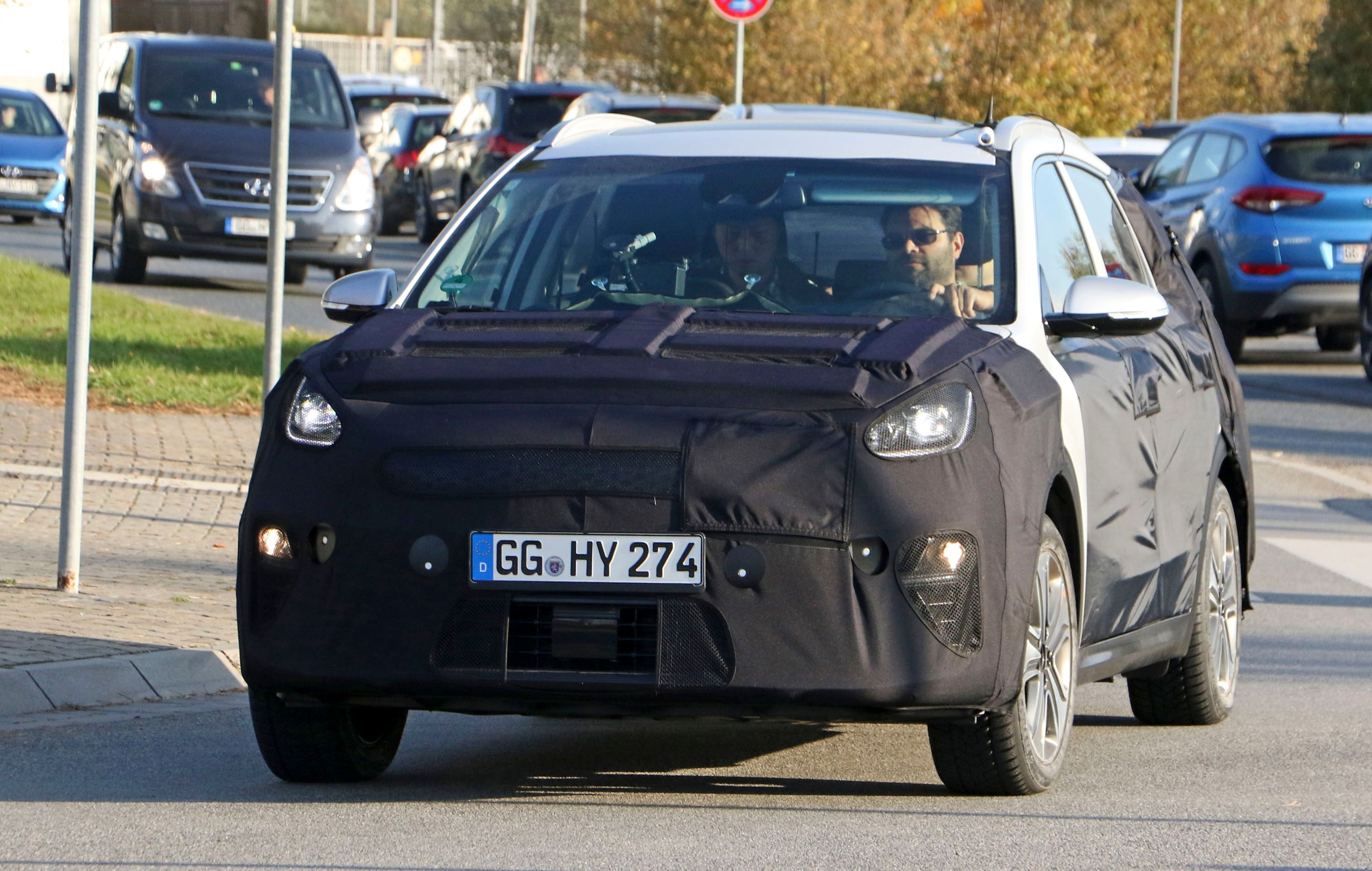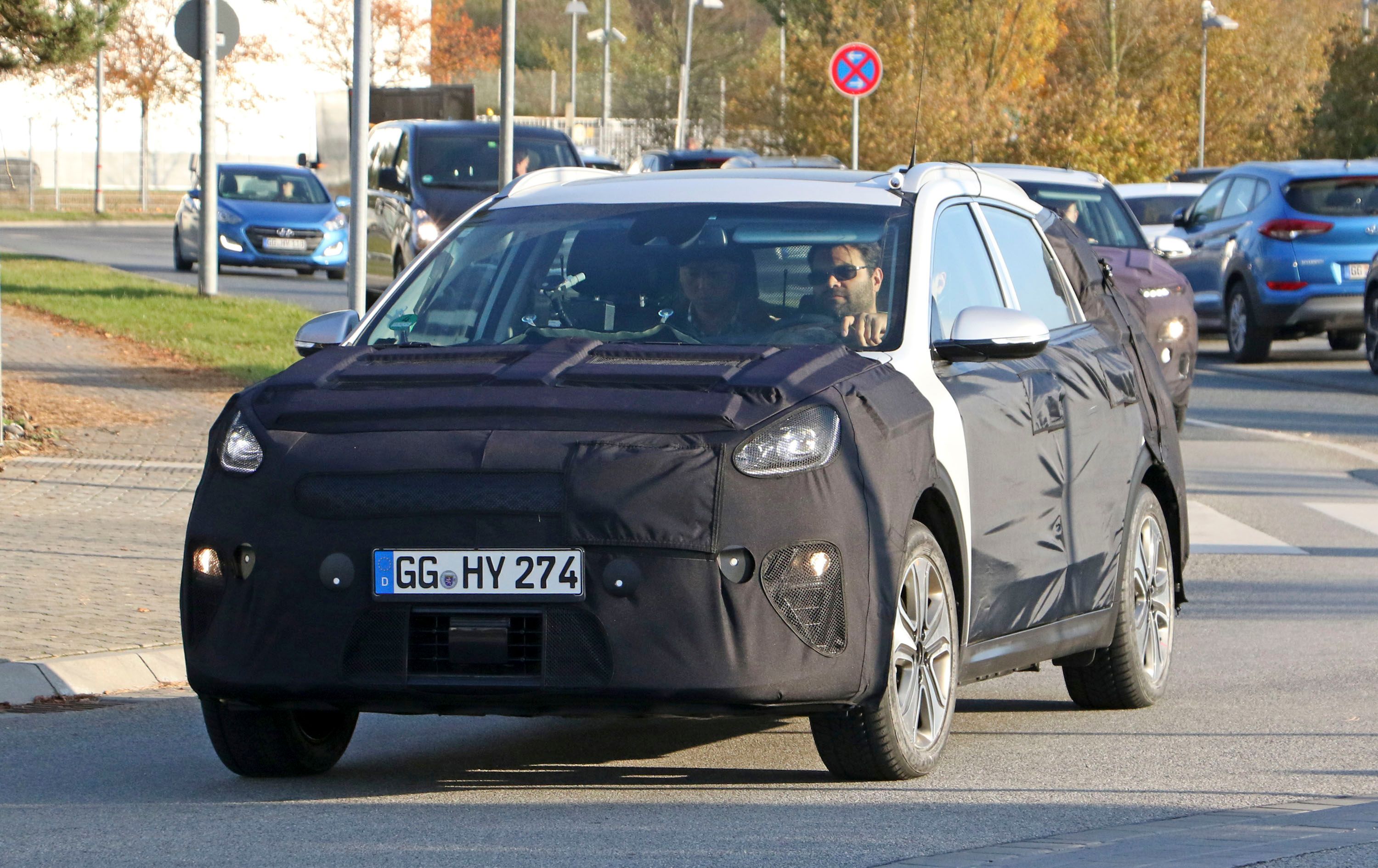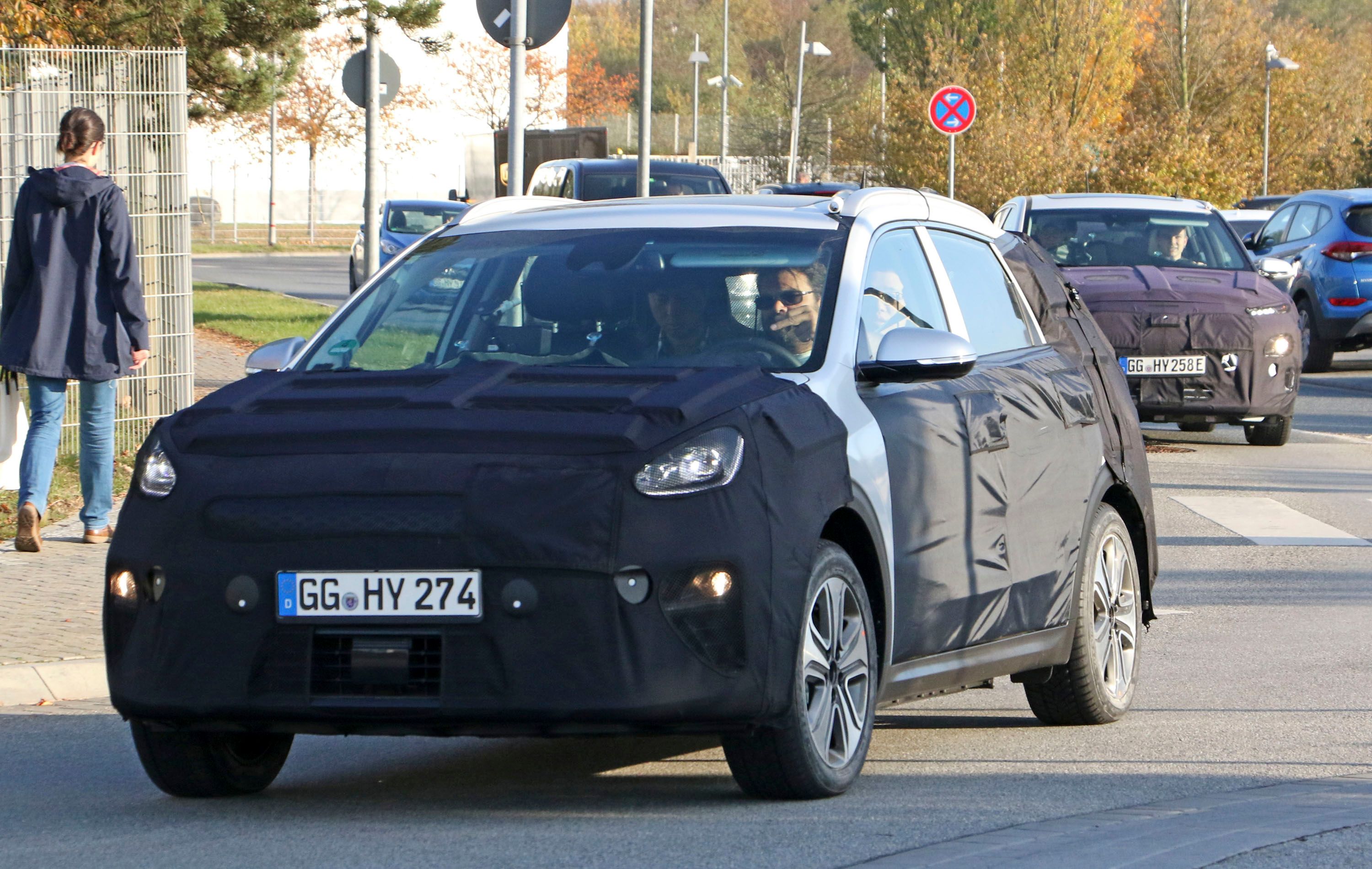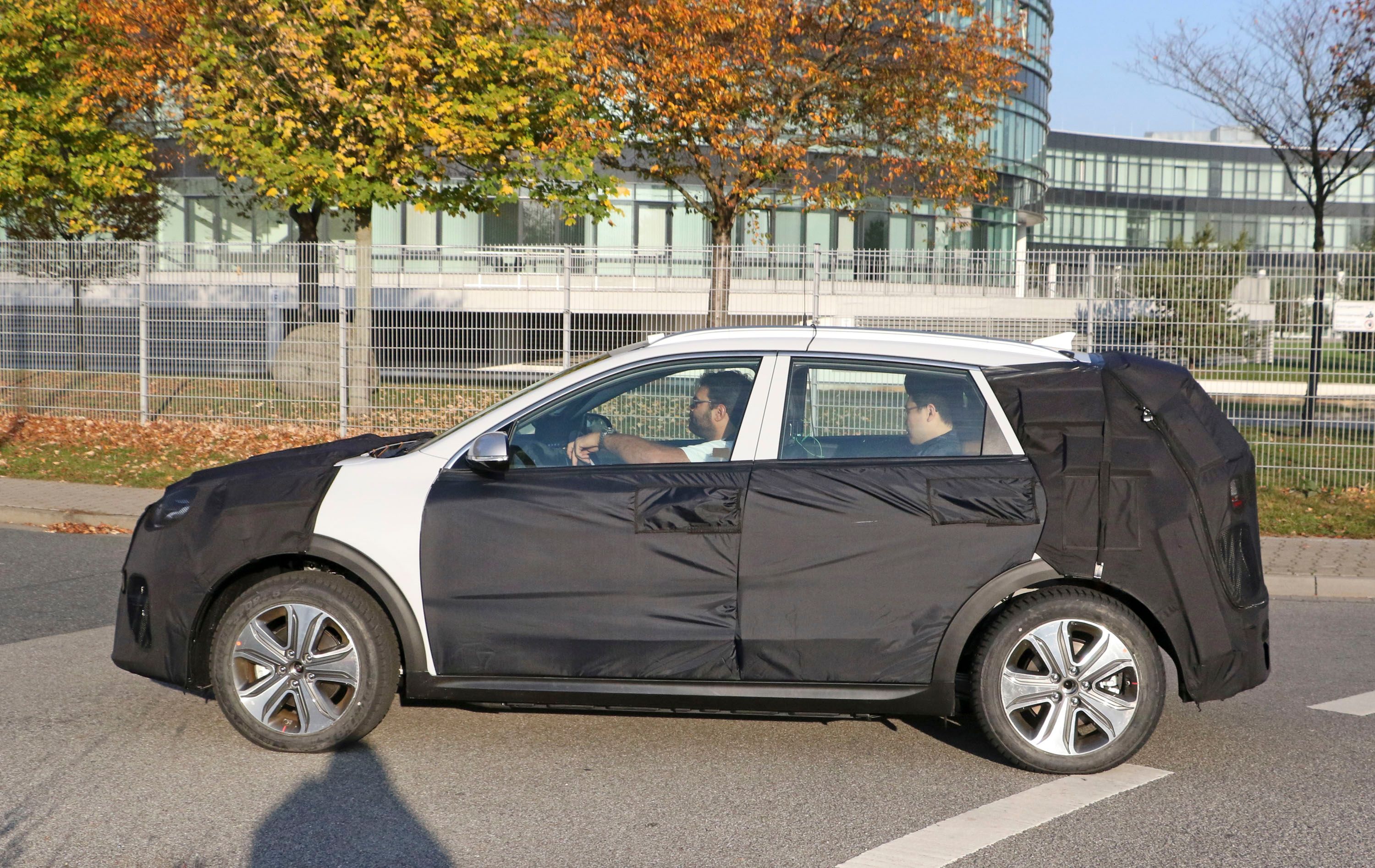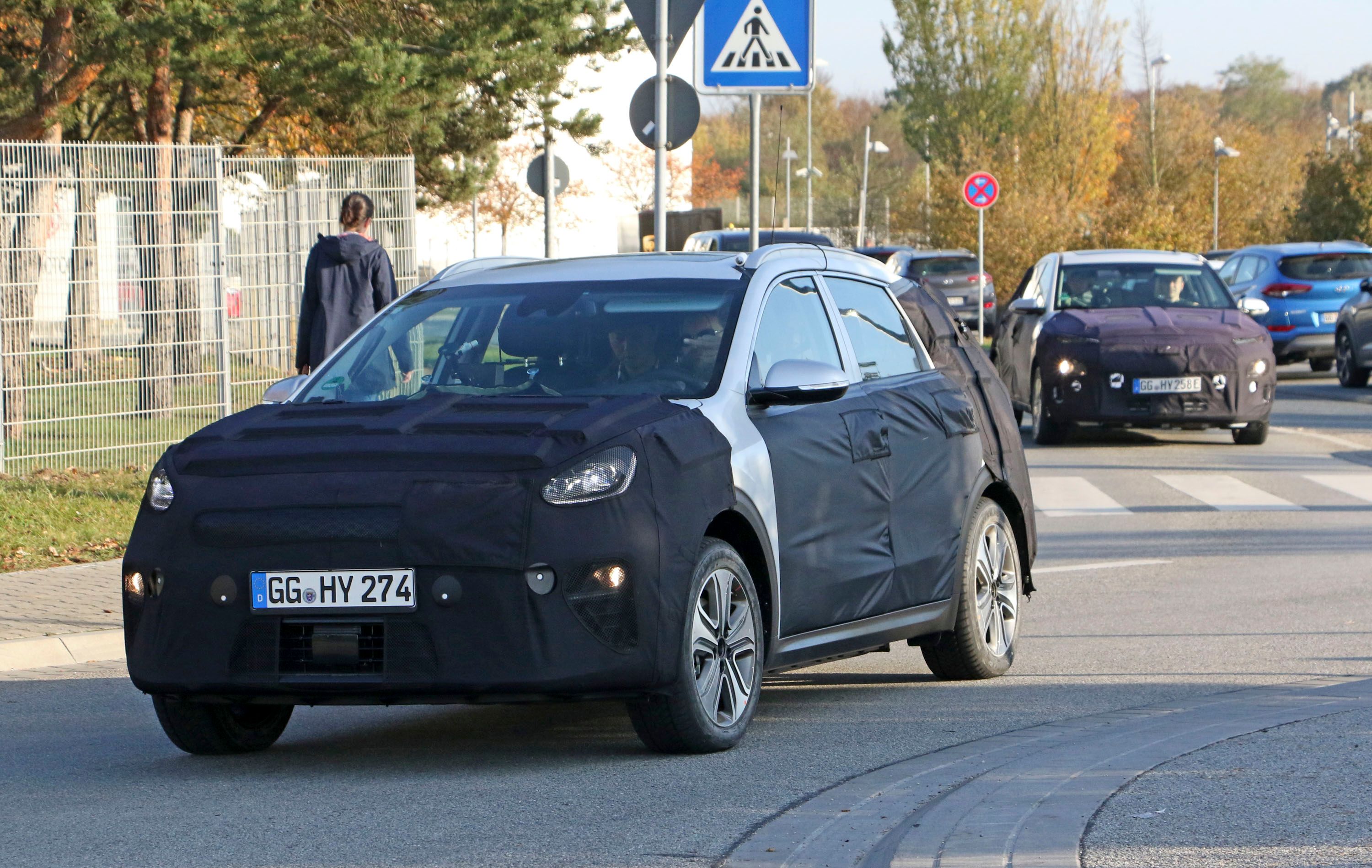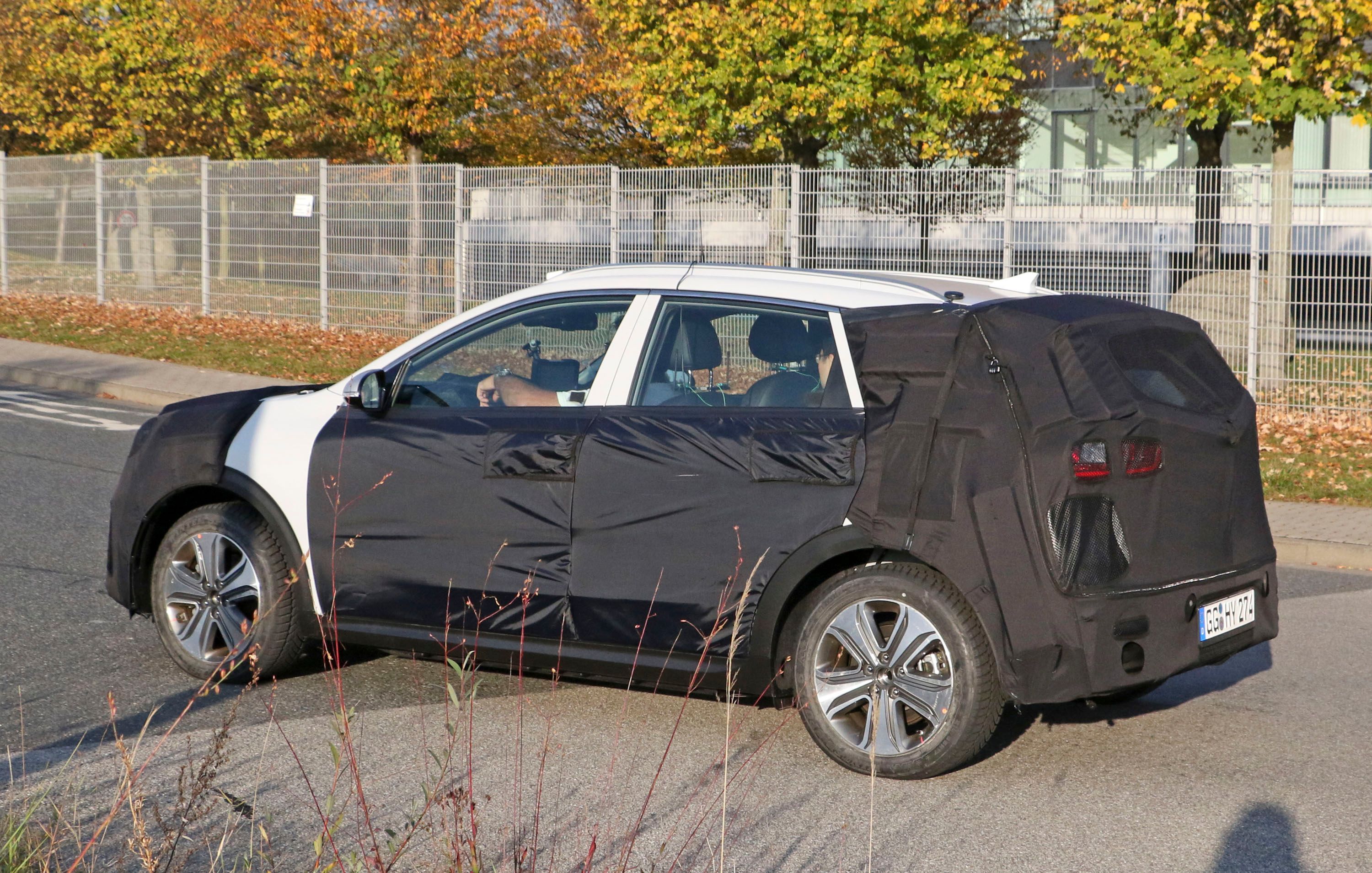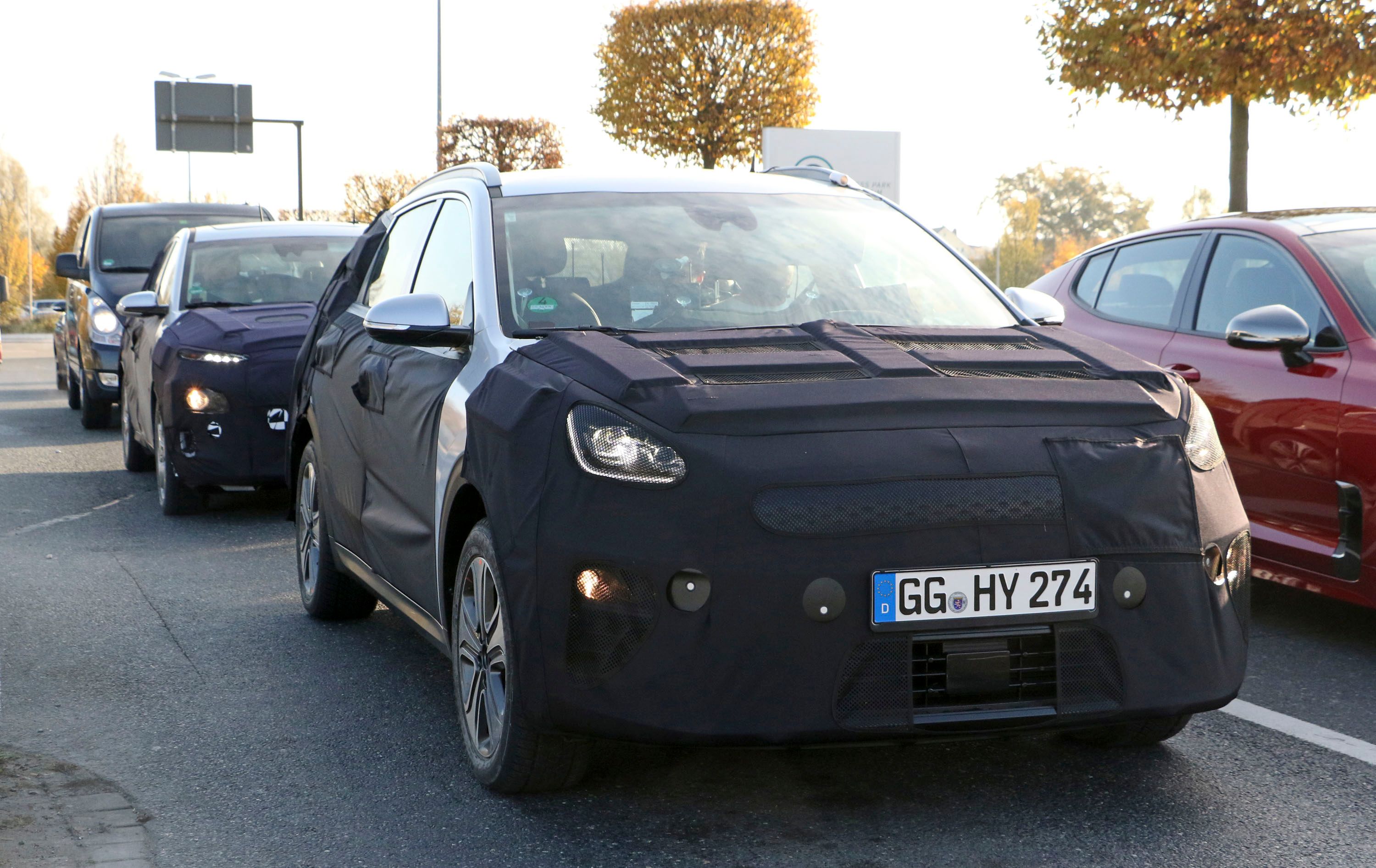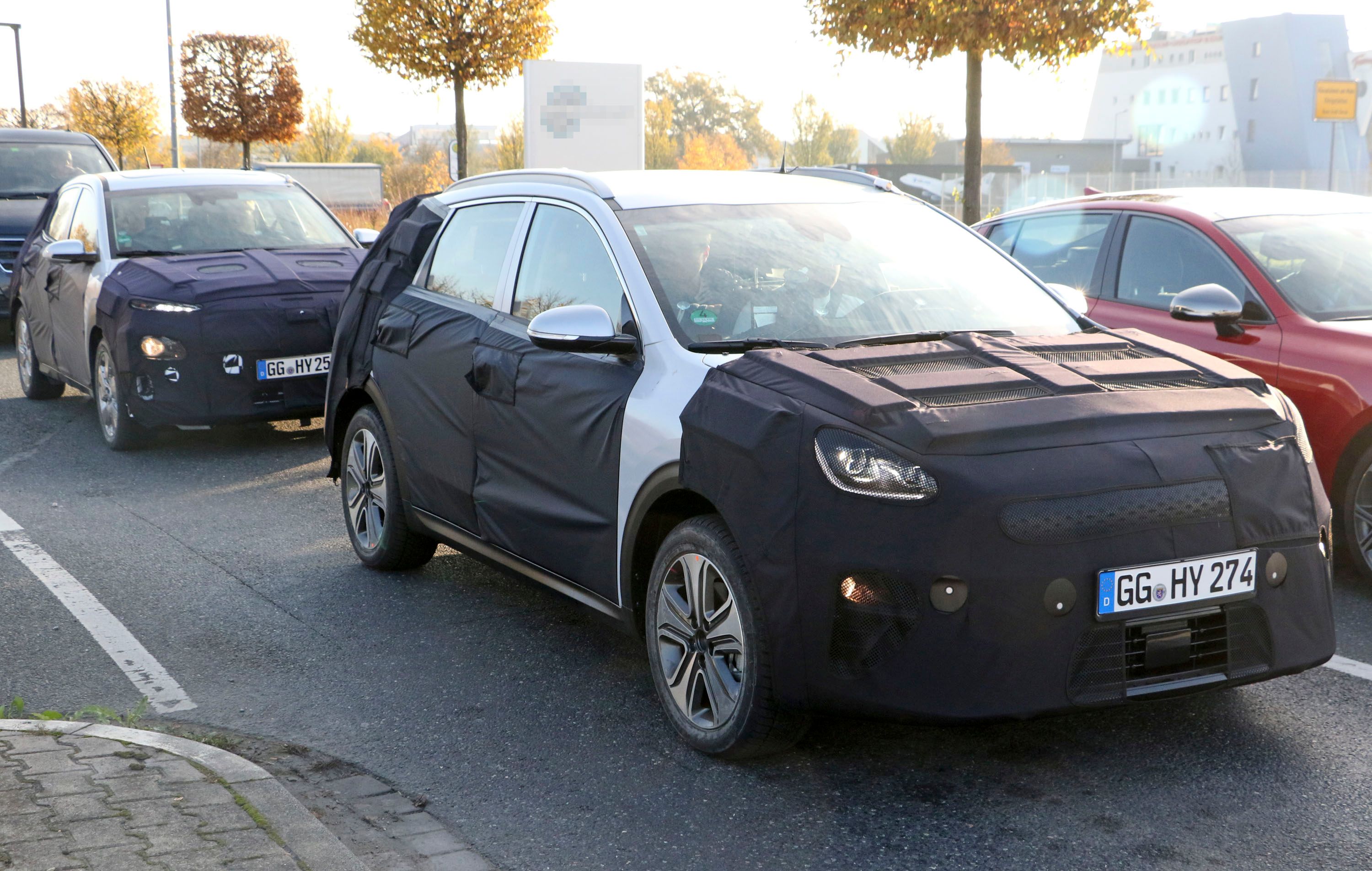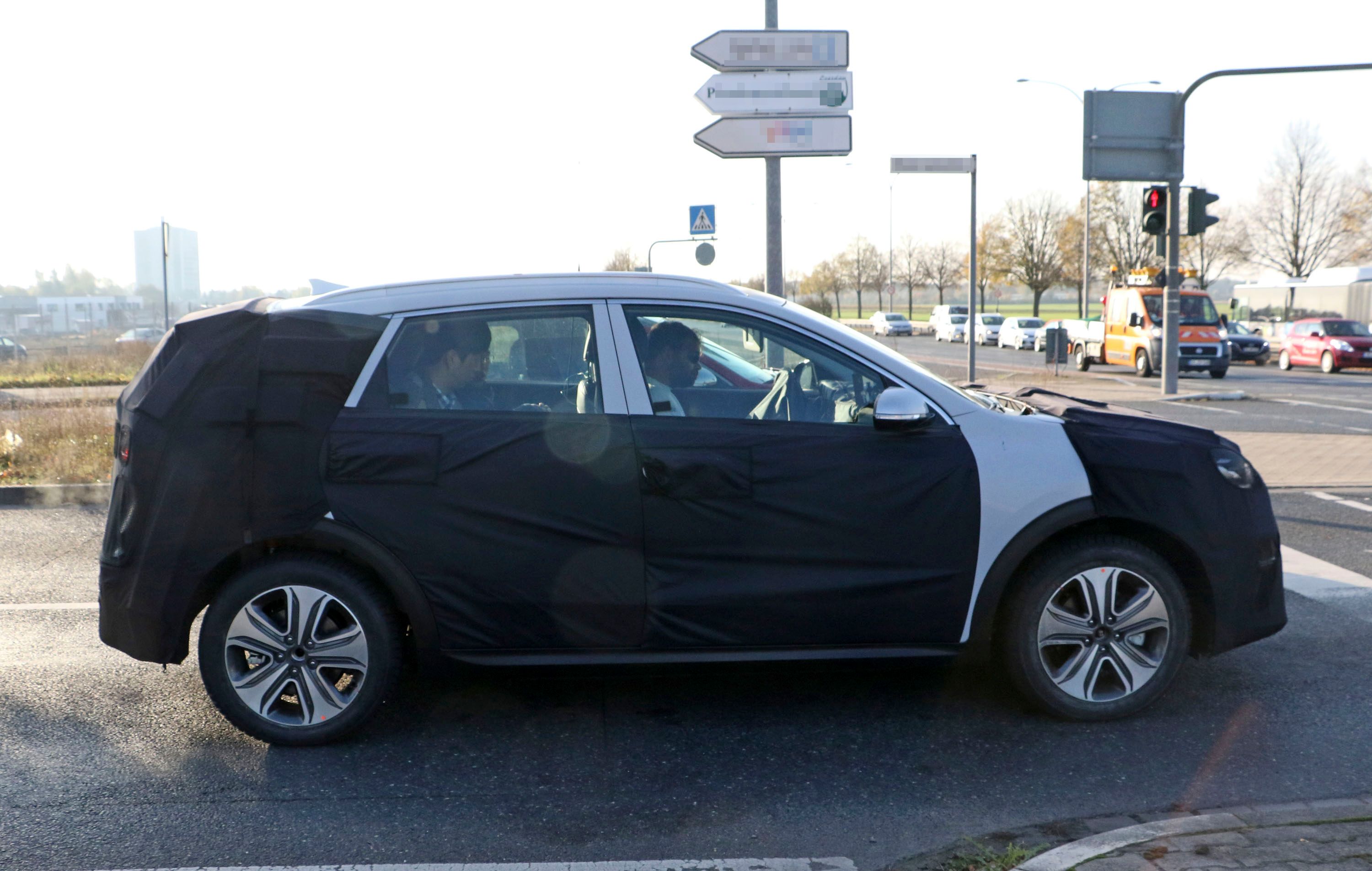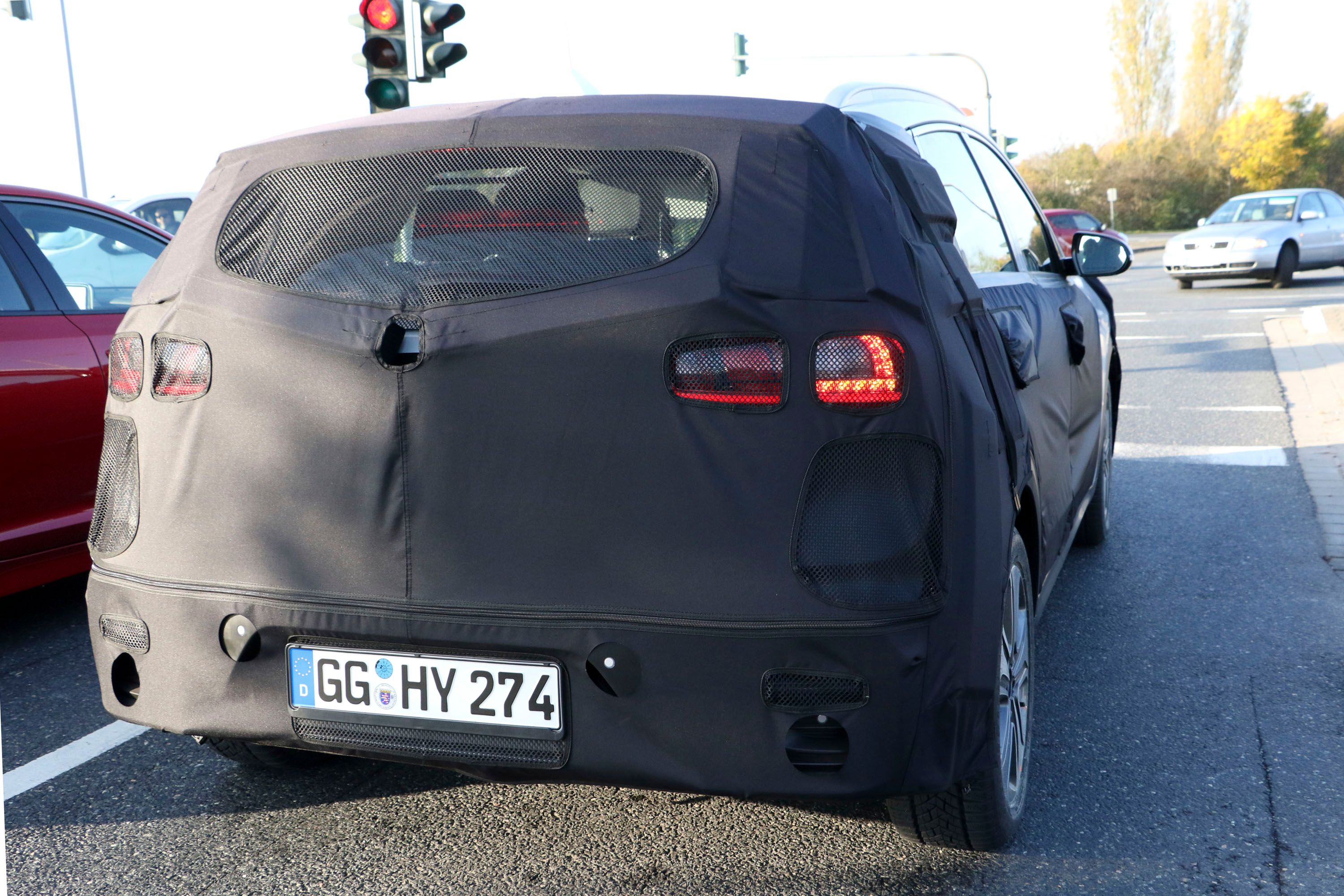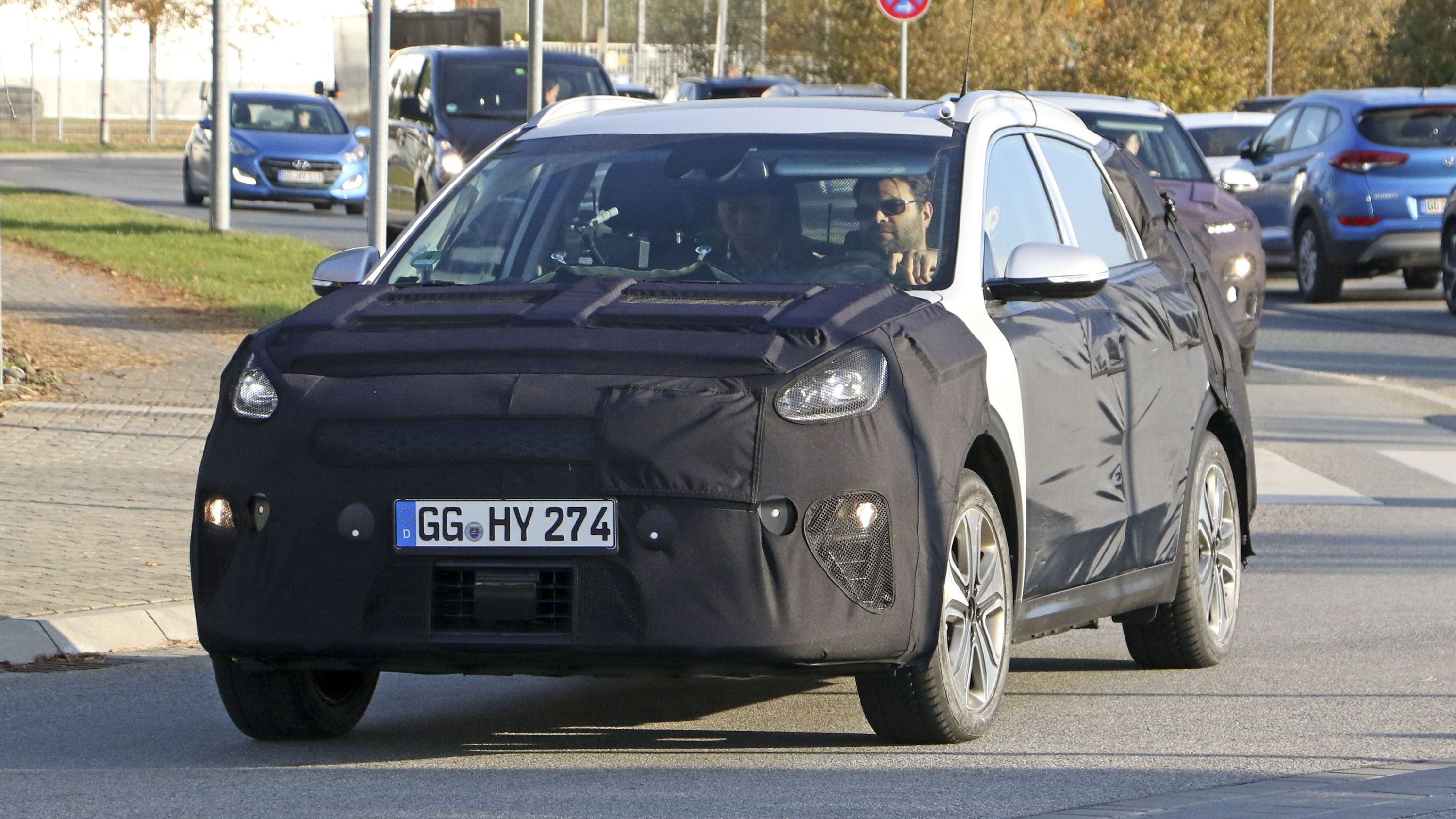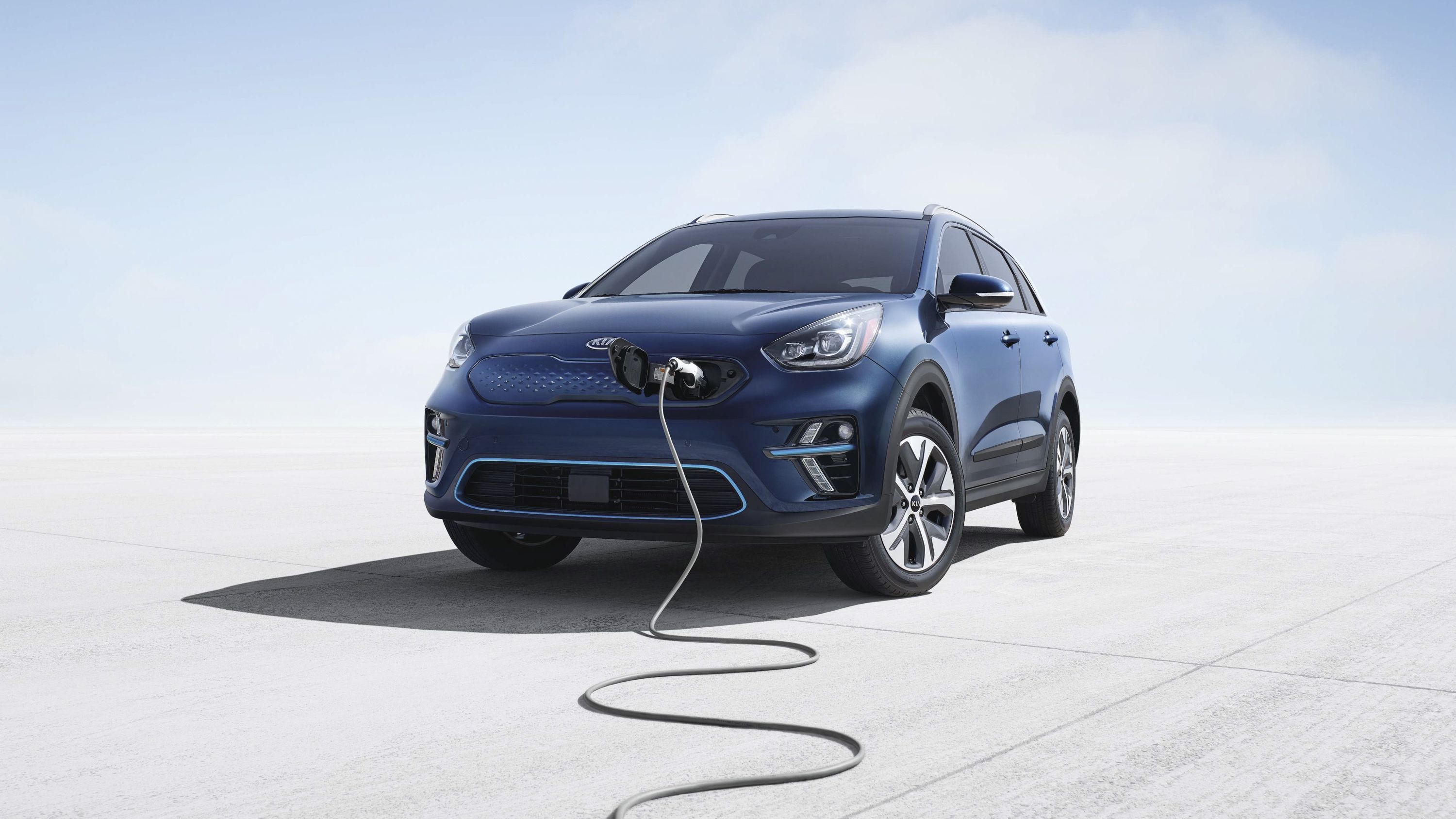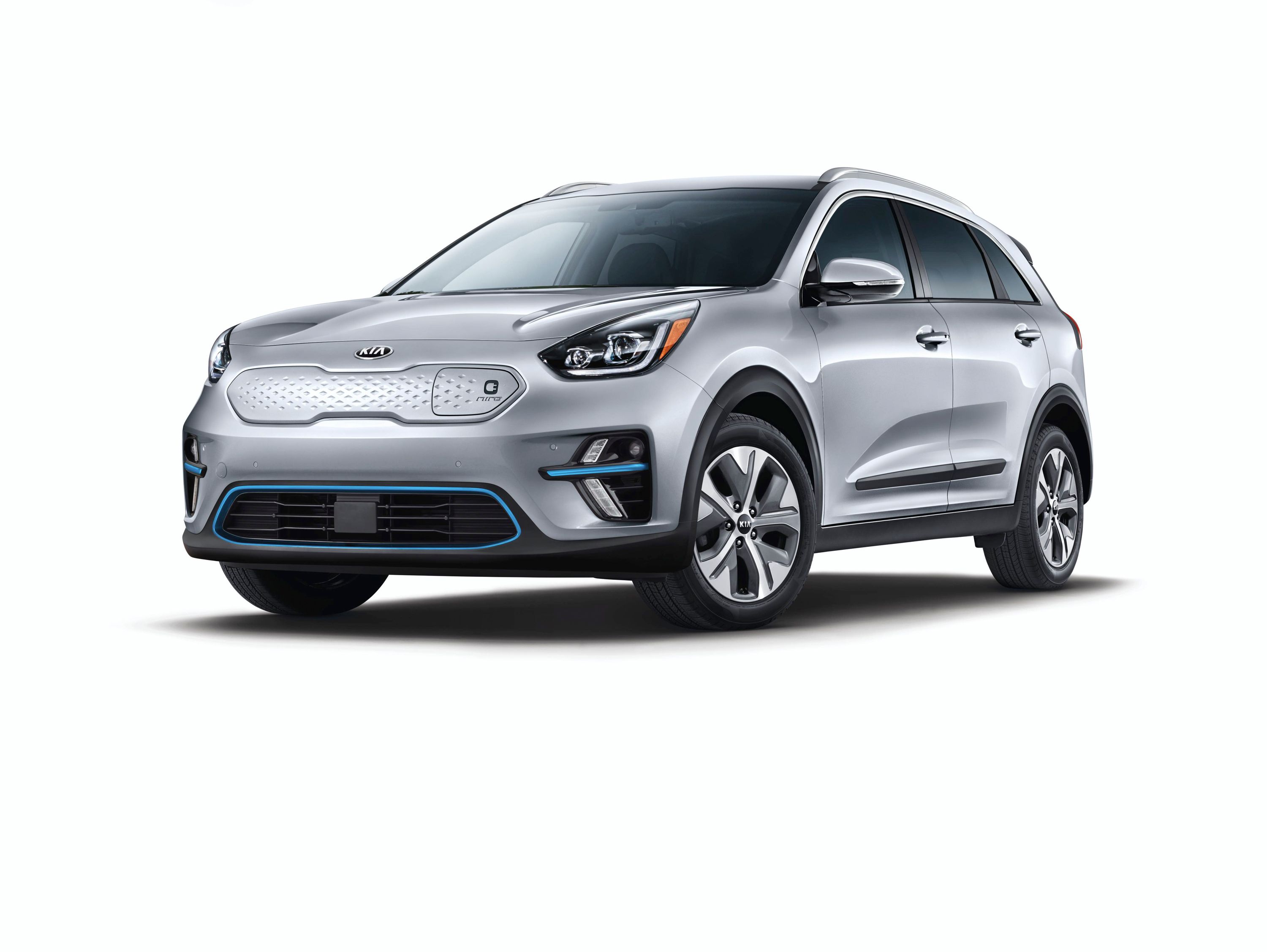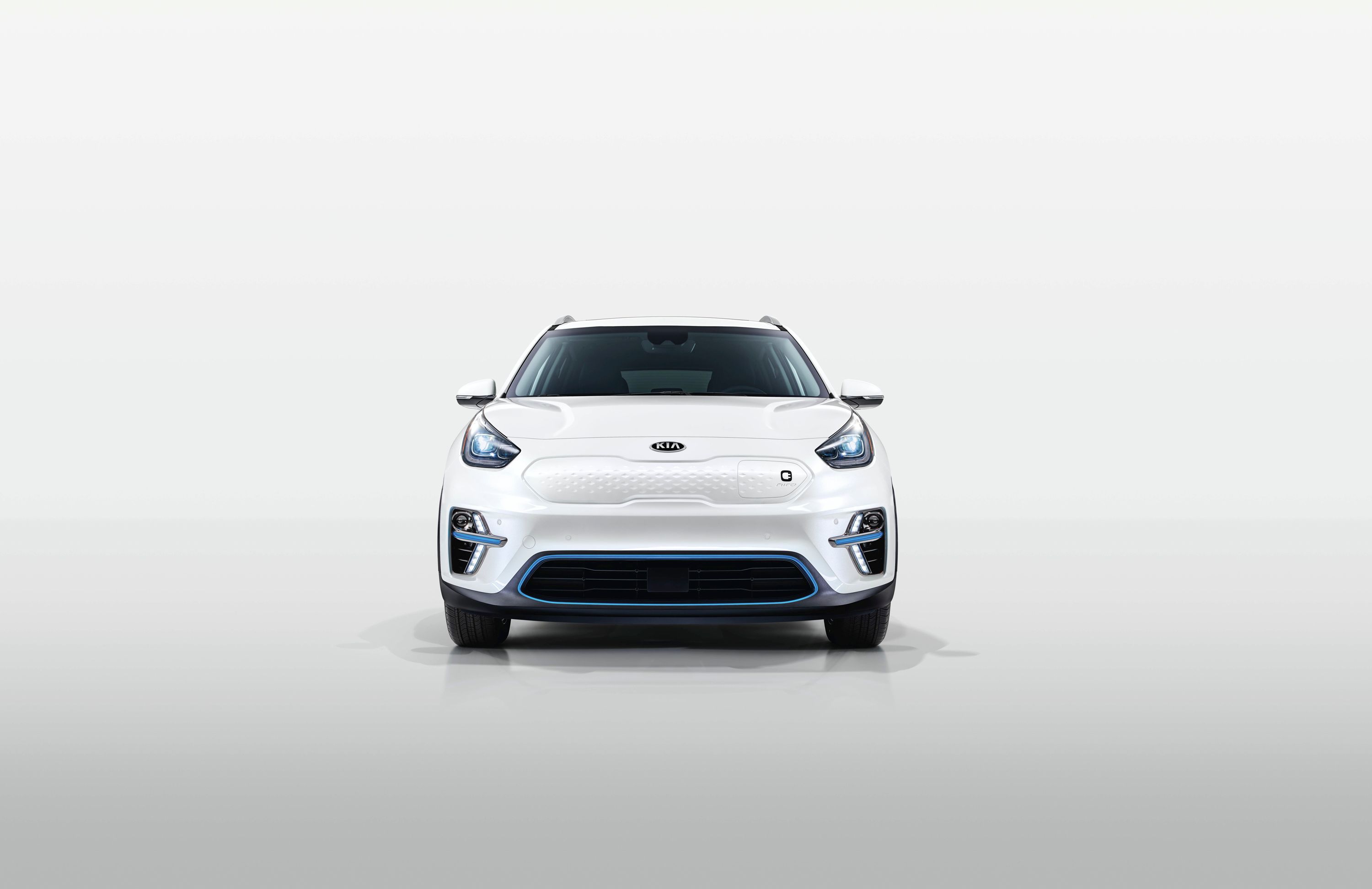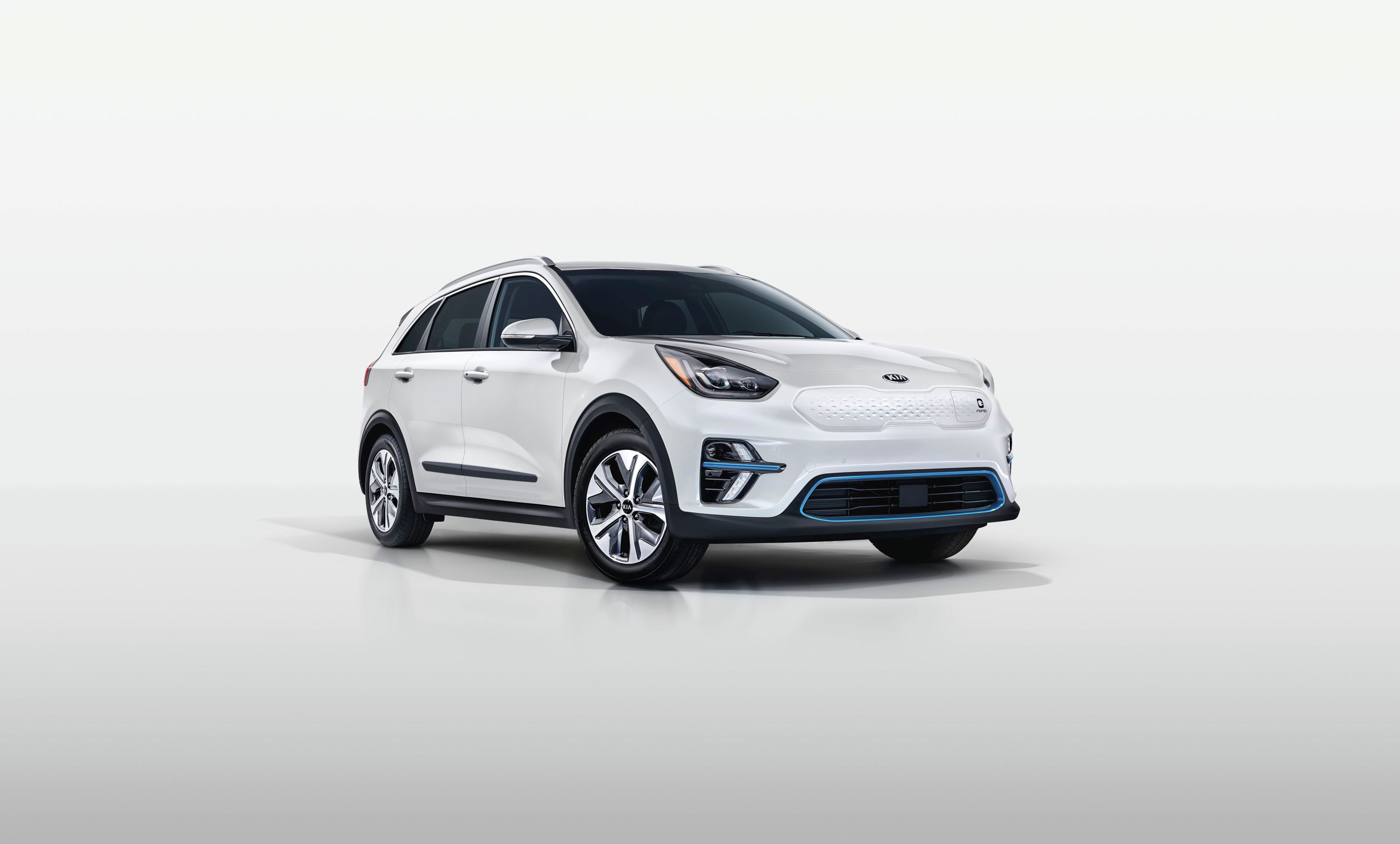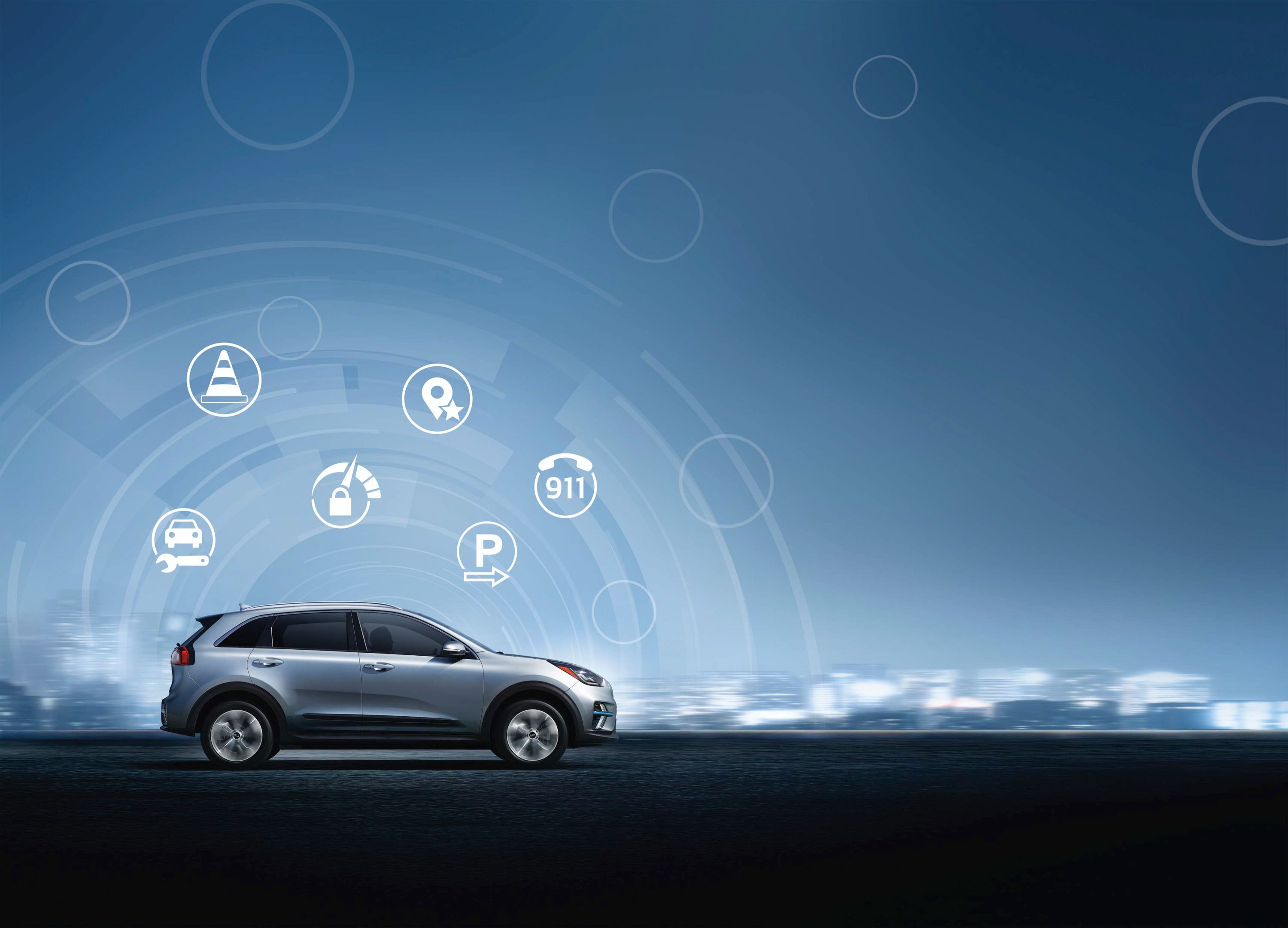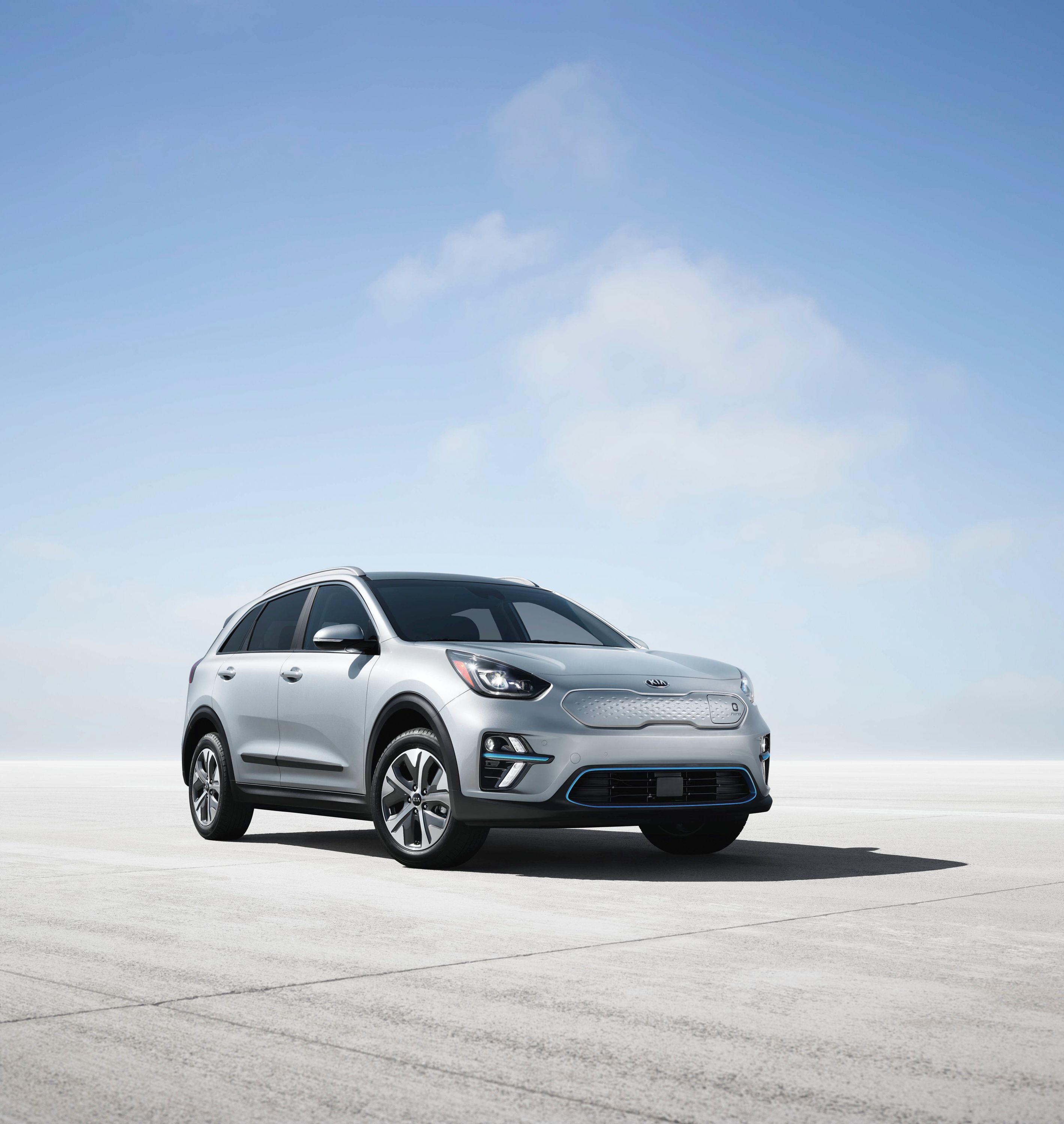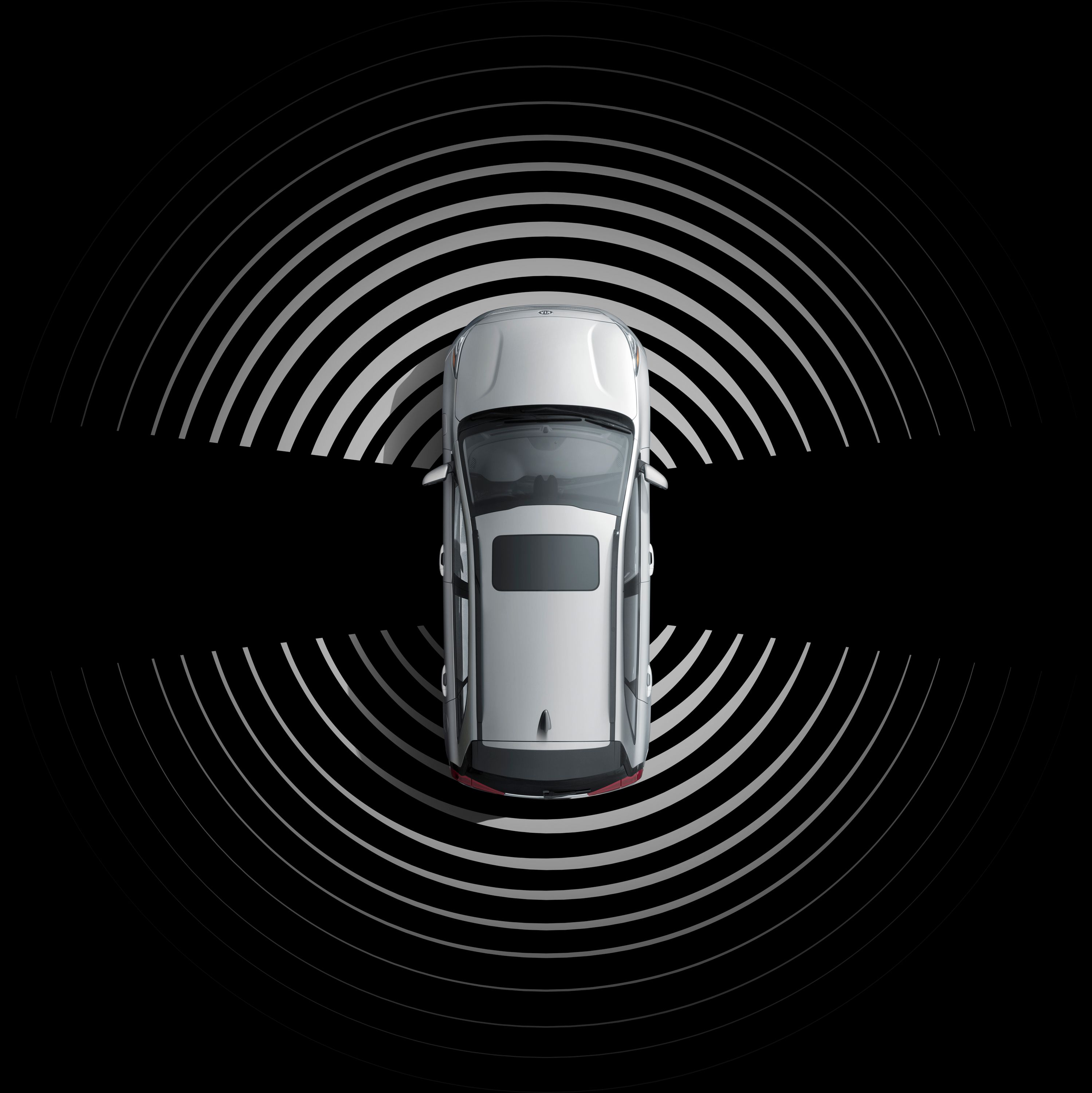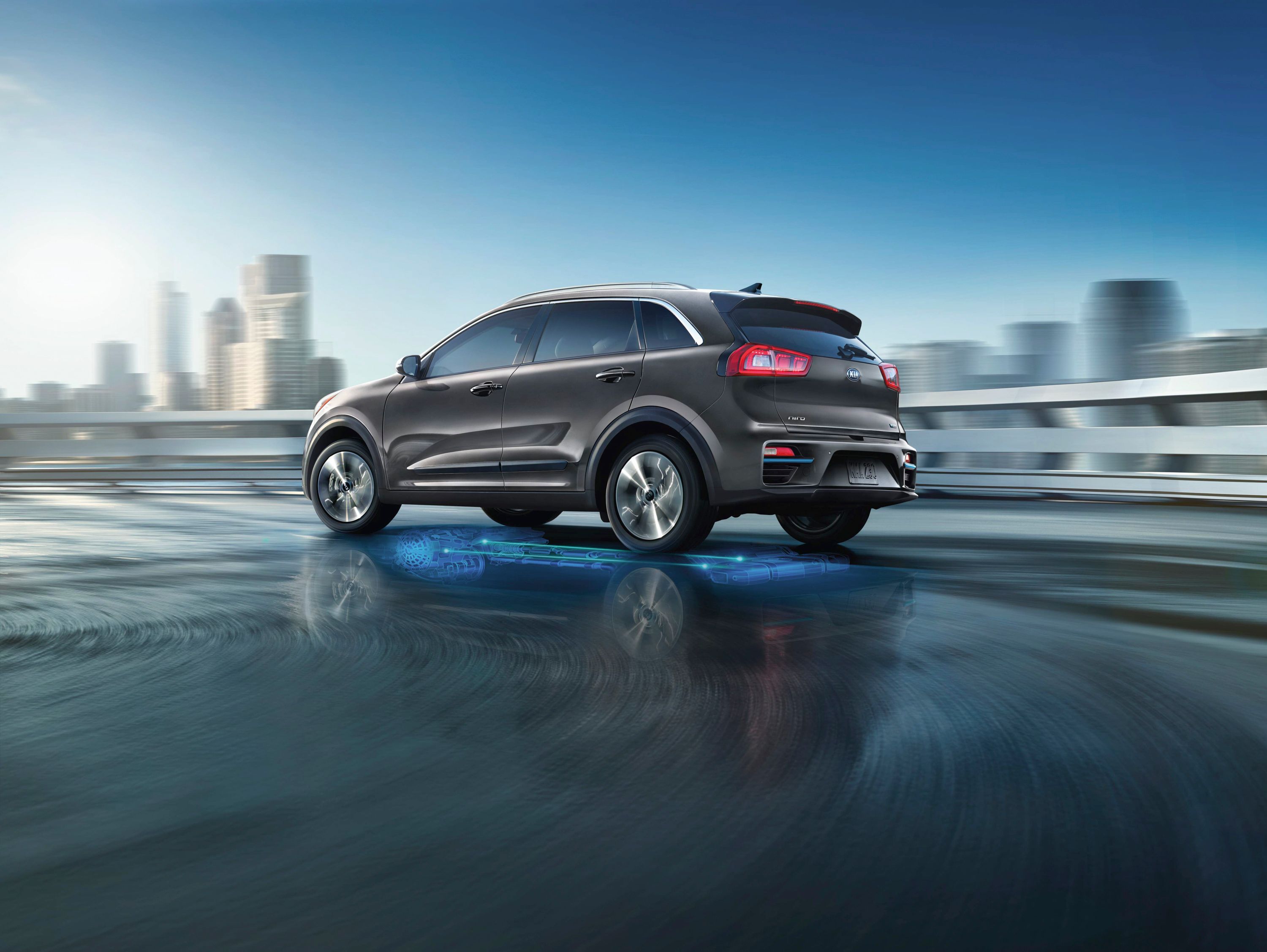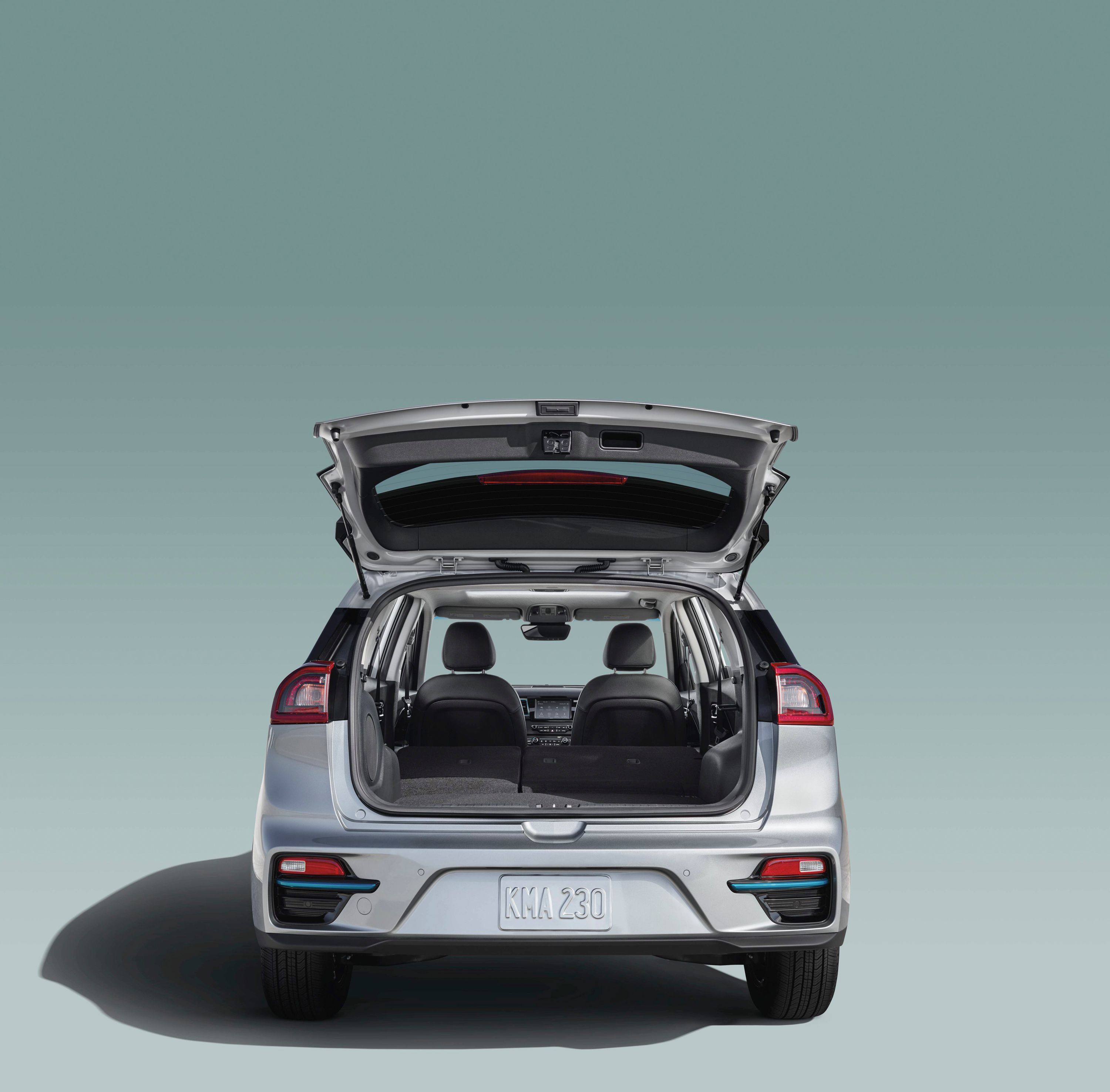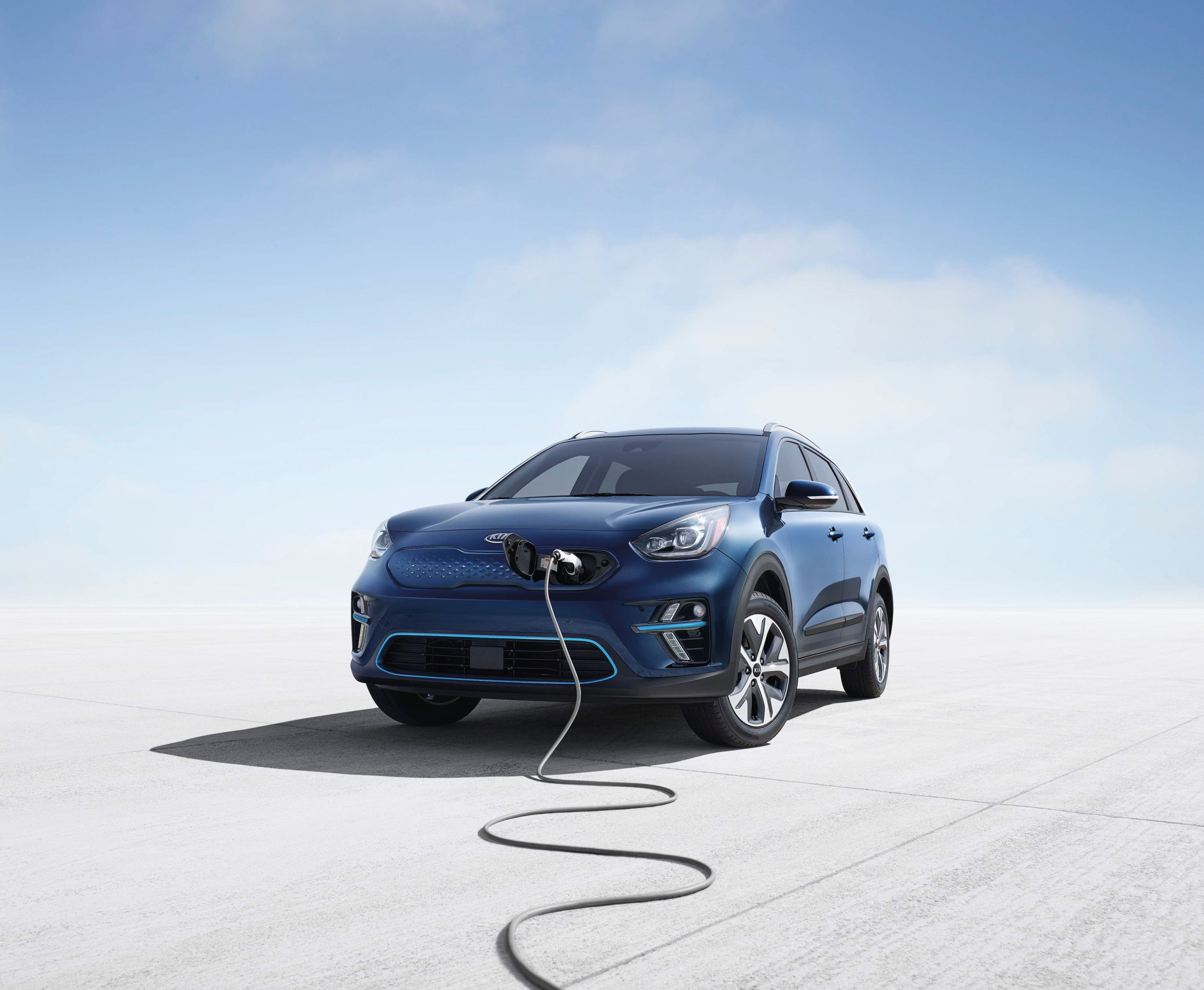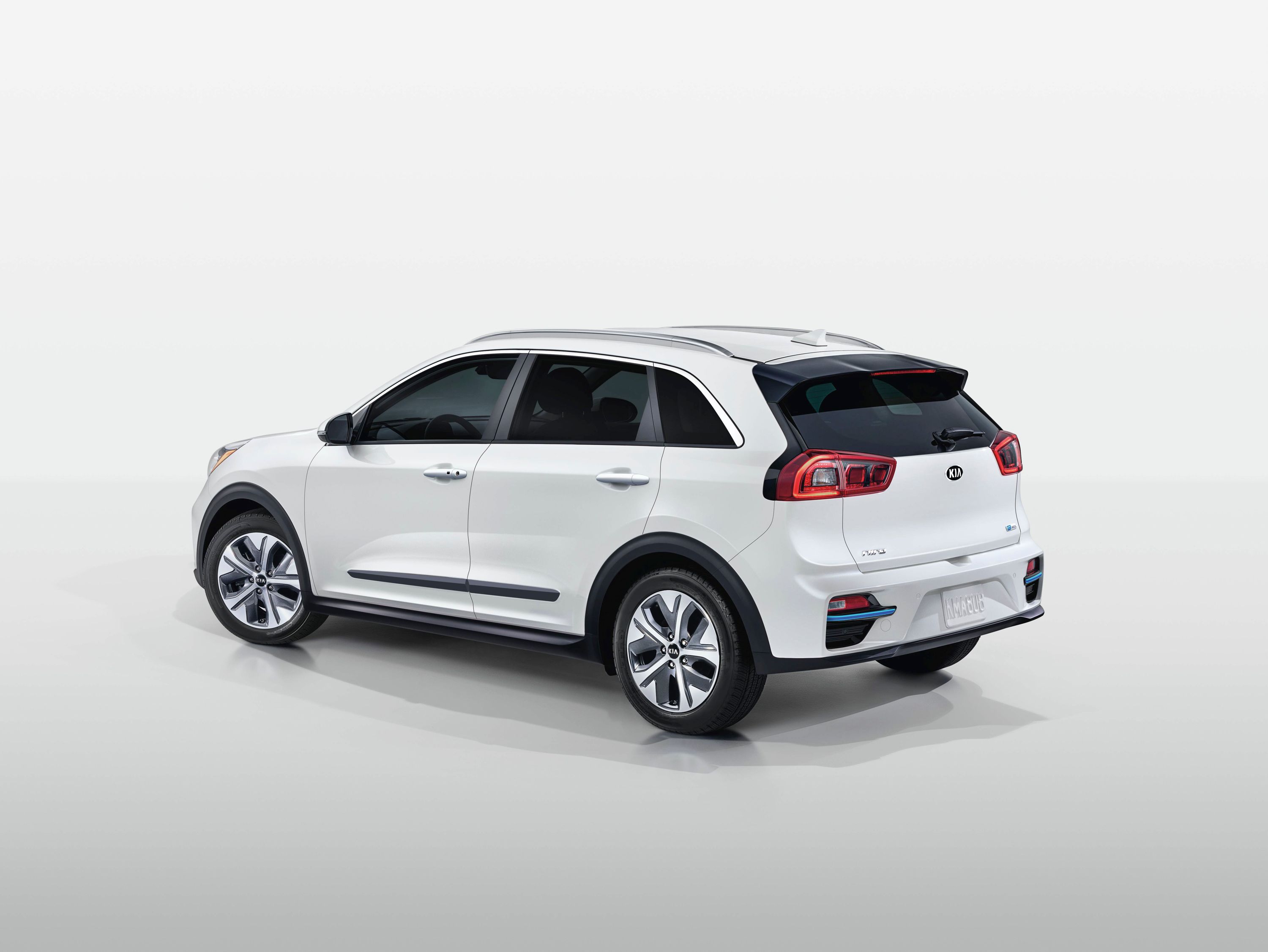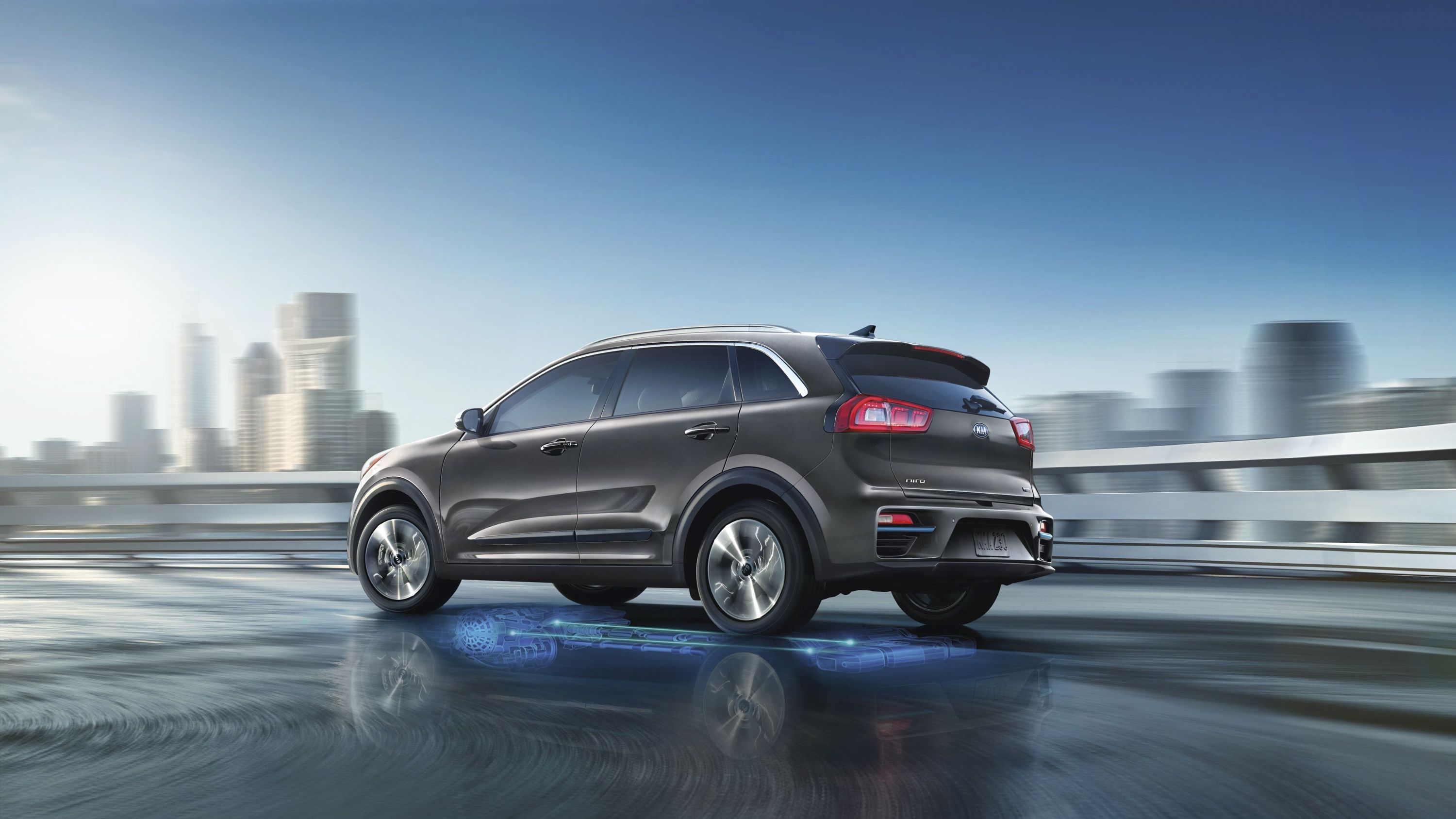The Kia Niro EV is the all-electric version of the Niro subcompact crossover that the Korean automaker launched for the 2017 model year. Unveiled in Autumn 2018 as the e-Niro for the European market, the Niro EV is the U.S.-spec model and broke cover at the 2018 Los Angeles Auto Show in late November. Virtually identical to its European sibling, the Niro EV and e-Niro share the same features and specification, save for the less powerful base model. Kia chose to bring only the more powerful version to the U.S., where it will compete against its platform sibling, the Hyundai Kona Electric (or EV on this side of the pond). The Niro EV is Kia's first all-electric crossover and among the first battery-powered SUVs for the non-premium market.
2019 Kia Niro EV
- Make: Array
- Model: 2019 Kia Niro EV
- [do not use] Vehicle Model: Array
The Concept Car
Unlike its hybrid sibling, which was previewed by a very futuristic concept, the Niro EV made its public debut as a production-ready show car at the 2018 Consumer Electronics Show. The Niro EV Concept is almost identical to the regular Niro on the outside, but it uses new headlamps and taillights, revised bumpers, and new wheels. It also has revised daytime running lights, black window trim, sportier side skirts, and a "Motion Graphic" lighting system in the front grille. Of course, the latter was replaced by a full panel since electric cars don't need the cooling system of a vehicle that uses a conventional engine.
Interestingly enough, the concept's interior is notably different from the production Niro hybrid. It has a new dashboard and steering wheel, a digital instrument cluster, gesture control, and more premium upholstery. Under the shell, the Niro EV appears to feature a production-ready electric drivetrain. Kia also released preliminary specs, but more about that in one of the sections below.
2019 Kia Niro EV Exterior
The Niro EV brings no surprised design-wise.
Up front, Kia ditched the traditional mesh of the "tigernose" grille in favor of a closed-off element. However, while most automakers usually go with a plain plastic piece, Kia sculpted small diamonds into it for a three-dimensional effect. A smaller cover with black "Niro" lettering on the right side hides the charging socket.
Kia also redesigned the bumper compared to the gasoline-powered model. While the latter has thin, vertical side vents and rectangular daytime running lights, the EV features bigger side outlets with "Arrowhead" lights. The design includes two LED lights shaped like the feather of an arrow, placed on each side of a blue trim element that runs horizontally. The same blue trim surrounds the lower vent, which is wider than on the standard Niro. The blue inserts are exclusive to this model.
Onto the sides, the electric crossover is identical to the regular Niro. Ignore the wheels and you won't be able to tell the two vehicles apart. But the EV's wheels aren't just about styling. These 17-inch rollers were actually engineered to help reduce drag and improve efficiency.
Around back, the Niro EV is identical to its gas-powered sibling above the bumper. Below, the trapezoidal license plate recess is flanked by outlets that mimic the side vents in the front bumper. They're shaped the same way as the "Arrowhead" lights and feature the same blue trim.
Overall, Kia managed to give the Niro an EV-specific look. What's more, it has a premium-like, high-tech look that you can't see on many electric vehicles.
2019 Kia Niro EV - exterior dimensions
|
Wheelbase (in.) |
106.3 in. |
|
Length (in.) |
172.2 in. |
|
Width (in.) |
71.1 in. |
|
Height, with roof rails (in.) |
61.8 in. |
|
Track, front/rear (in.) |
62.0 in. / 62.4 in. |
|
Overhang, front/rear (in.) |
34.8 in. / 31.1 in. |
|
Min. ground clearance (in.) |
6.1 in. |
|
Approach Angle (degree) |
16.6 |
|
Departure Angle (degree) |
29.0 |
2019 Kia Niro EV Interior
It's the same story inside the cabin, which is identical to the gas-powered Niro but fitted with a few extras, mostly for EV-related purposes.
Just like the regular Niro, the EV's interior looks like a nice place to spend time in. It looks modern and fresh, it feels rather upscale, and the design is unique in Kia's crossover lineup.
The infotainment display isn't particularly big in the base model at seven inches, but it's on par with what you get from the competition. The digital screen in the instrument cluster is also rather small, but it provides all the necessary data about the vehicle's drivetrain.
Opt for the more upscale Premium EX trim and you get the bigger, eight-inch infotainment display with navigation, a power tilt-and-slide sunroof, and eight-speaker Harman Kardon premium audio system with external amplifier and subwoofer, and auto-dimming mirror with Homelink. This range-topping model also features a heated steering wheel, LED interior lighting, Mood lighting, and parking distance warning.
The latter enables the vehicle to send a notification to the server if the panic alarm is triggered and the system dials 911 emergency services, provides the car position via GPS, and opens a live microphone so that you or other passengers can communicate with emergency workers.
It also controls “Send-to-Car” points of interest and waypoints, allowing you to plan a road trip and send it to the vehicle’s navigation system, and pre-conditions the cabin temperature prior to use.
2019 Kia Niro EV interior dimensions
|
Head room front/rear |
40.1/37.7 in. |
|
Leg room front/rear |
41.7/36.0 in. |
|
Shoulder room front/rear |
56.0/55.1 in. |
|
Hip room front/rear |
53.7/48.3 |
|
Luggage capacity, rear seats upright with luggage under tray (SAE, cu.ft) |
18.5 cu. ft. |
|
Luggage capacity, rear seats folded with luggage under tray (SAE, cu.ft) |
53.0 cu. ft. |
|
Luggage capacity, passenger volume (SAE, cu.ft) |
96.6 cu. ft. |
2019 Kia Niro EV Drivetrain
Naturally, the U.S.-spec Niro EV shares underpinnings with the Euro-spec e-Niro. However, while the European version comes with two battery options, the U.S. model features only the more powerful drivetrain.
It's not as powerful as premium crossover EVs like the Mercedes-Benz EQC, Jaguar I-Pace, and Tesla Model X, but all of them are out of the Niro's league in terms of features and pricing. Charging to 60 mph takes around 7.8 seconds.
But while it might not have the power and sprint potential of a sports car, the Niro EV comes with a pretty solid range per single charge.
Charging happens pretty fast and on par with the competition with the DC fast-charge system, as you'll get a range of around 100 miles in 30 minutes. Plug the vehicle in for 75 minutes and the battery charges to 80 percent. A full charge at a 7.2 kWh charger takes about nine hours and a half.
You can drive the Niro EV in one of four modes: Eco, Normal, Sport, and Eco+. All of them automatically automatically adjust regenerative braking level, air conditioning, and heating settings, as well as set speed limits to help manage efficiency.
The smart regenerative braking, operated via paddle shifters, enables you to slow the car and capture kinetic energy, which returns to the battery and adds extra range. You can choose from four regenerative braking levels.
A Brake and Hold System feature allows the paddle shifters to bring the car to a full stop, adding energy to the battery that would be lost using normal braking. It also adjusts the regenerative braking level based on a vehicle being detected in front by creating smoother coast-down driving, especially when descending a steep road.
2019 Kia Niro EV specifications
|
Electric Motor |
|
|
Motor Type |
Permanent Magnet Synchronous Motor |
|
Voltage |
356V |
|
Horsepower |
201 hp / 3,800-8,000 rpm (150 kW / 3,800-8,000 rpm) |
|
Torque |
291 lb.-ft. / 0-3,600 rpm (395 N*m / 0-3,600 rpm) |
|
Electrical System |
|
|
High-Voltage Battery Pack |
- |
|
Battery Type |
Lithium Ion Polymer Battery (LIPO) |
|
Battery Voltage (V) |
356V |
|
Battery Capacity (Ah) |
180 Ah |
|
Battery Energy (kWh) |
64 kWh |
|
Battery Power (kW) |
170 kW |
|
Battery Weight (lbs.) |
1,008 lbs. |
|
Drivetrain |
|
|
Transmission Type |
Gear Reduction Unit |
|
Final Gear Ratio (Constant) |
8.206:1 |
|
Dynamic Performance |
|
|
Max. Speed (mph) |
103.8 mph |
|
Acceleration Performance (sec) |
- |
|
0 - 62.1 mph |
7.8 |
|
49.7 - 74.6 mph |
5.0 |
|
Brake Performance (ft.) |
- |
|
62.1 - 0 mph |
137 ft. |
|
Charging |
|
|
On-board charger (OBC) |
7.2 kW |
|
Port locations |
Behind front grille |
|
Charging time |
- |
|
Level 1, AC charge with in Cable Control Box (ICCB) |
59 hours (120V) |
|
Level 2, AC charge with Electric Vehicle Supply Equipment (EVSE) |
9 Hours 35 Min (7.2 kW) |
|
DC fast charge with Electric Vehicle Supply Equipment (EVSE) to 80% charge |
75 Min (50 kW) |
2019 Kia Niro EV Pricing
The Niro Hybrid currently tips the pricing scale at $23,240 for an entry-level model. Meanwhile, the range-topping Touring trim level is currently going for around $31,900. With that in mind, you can expect the EV to start out at no less than $30,000 because, for lack of a better reason, it’s an EV. It’s naturally more expensive to have such a large battery. The range-topping model could fetch close to $40,000 before options though. Seems like a lot for a subcompact crossover, but it’s an EV, and that’s the way the market trends right now for prices on these things – even the little ones.
2019 Kia Niro EV Competitors
Hyundai Kona Electric
Based on the same platform, the Kona Electric is virtually identical to the Niro EV. It has the same battery and the same horsepower and torque ratings. However, its range is rated slightly higher at up to 258 miles. It's the design that sets it apart, featuring the already traditional Hyundai look with slim headlamps at the top and bigger units in the bumper. In some ways, the Kona Electric looks more aggressive, and the two-tone option gives it a funky appearance. The Kona Electric will come to the U.S. in early 2019 as the Kona EV, but pricing is not yet available. Most likely it will have a similar sticker, so expect it to start from around $30,000.
Read our full review of the 2019 Hyundai Kona Electric
Jaguar I-Pace
With no other affordable crossover EV to talk about, we need to look in the premium market for more competitors. One example is the Jaguar I-Pace. Launched only two years after the British firm unveiled its first SUV, the I-Pace is based on the gasoline-powered E-Pace, but it’s almost as big as the F-Pace, which makes it larger than the Niro. It looks sportier and stands out thanks to a wide range of unique features, and it's also more powerful. The crossover draws its juice from a 90-kWh battery that powers two electric motors rated 394 horsepower and 513 pound-feet of torque combined. Definitely impressive, as is the fact that it needs only 4.5 seconds to hit 60 mph from a standing start. Mileage is estimated at 240 miles in the U.S., on par with the Niro EV. Pricing for the I-Pace, on the other hand, starts from $69,500, which makes it prohibitive for the average Joe.
Read our full story on the 2019 Jaguar I-Pace.
Mercedes-Benz EQC
Part of the company's new lineup of all-electric vehicles under the EQ brand, the EQC is also a tad bigger than the Niro. It's obviously on the more premium side of the market with fancier trim and a more powerful drivetrain. Unlike other EVs, it also has an actual grille with openings and slats. The EQC is pretty impressive performance-wise, with its electric motors generating a total of 402 horsepower and 564 pound-feet of torque. The 60-mph mark comes in only 4.9 seconds, while top speed is rated at 112 mph. On the other hand, Mercedes estimates a range of around 200 miles, which is notably inferior to the Niro EV. Pricing is not yet available, but the EQC should cost well in excess of $50,000 in base trim and before options.
Read our full review of the 2019 Mercedes-Benz EQC.
Conclusion
The Niro EV is an extremely important vehicle for the crossover market. While the EV segment is already packed with models like the Jaguar I-Pace, Mercedes-Benz EQC, and the Tesla Model X, all of them are of the premium variety and not exactly accessible to the average buyer. The Niro EV, much like the Hyundai Kona Electric, comes to fix that with a sticker that likely starts around the $30,000 mark. This is big news for the affordable market and it should prompt other automakers to join this niche as well. It's somewhat disappointing that Kia doesn't offer the base model in the U.S. as well, but the 201-horsepower is definitely a solid competitor, even for the premium offerings.
Further reading
Read our full review on the 2017 Kia Niro.
Read our full review on the 2019 Kia e-Niro.
Read our full review on the 2018 Kia Niro EV Concept.


